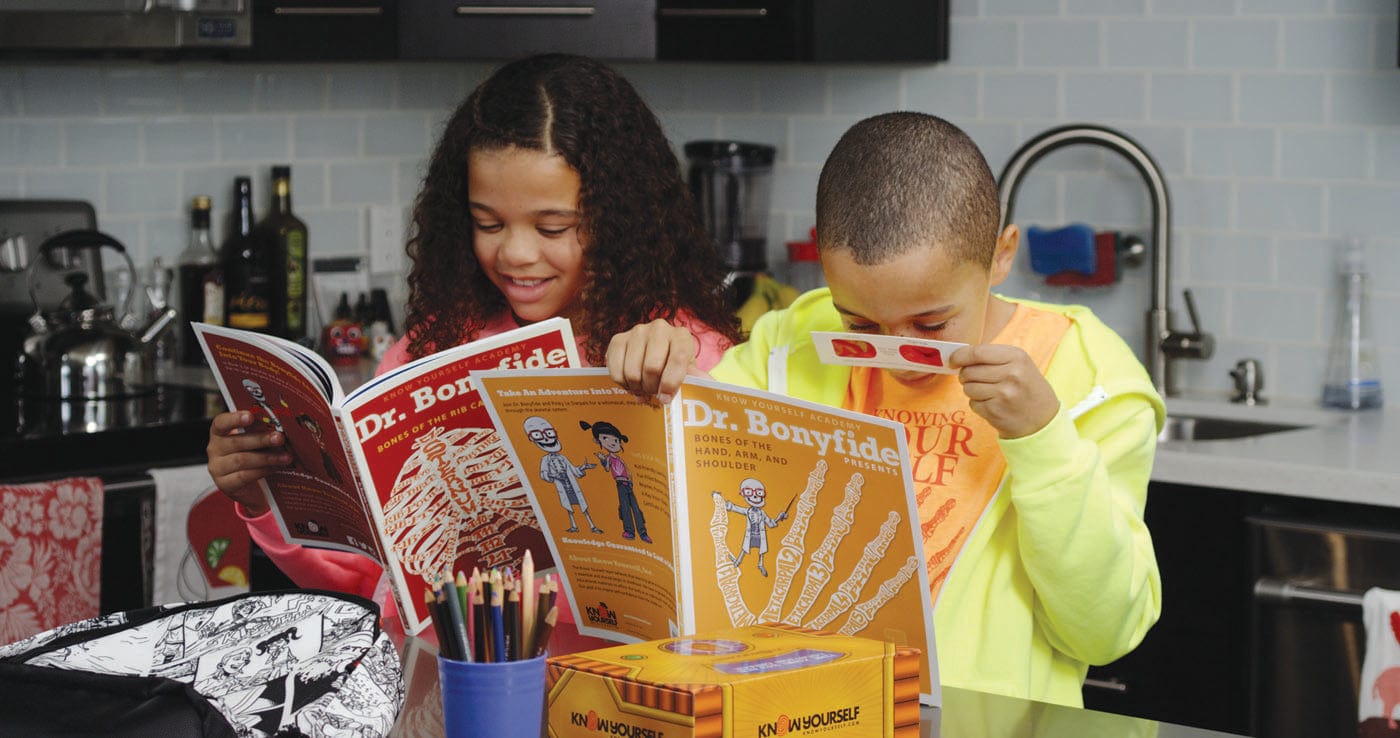
Welcome, Know Yourselfers, to our twelfth and final adventure! It’s been a long ride, but here we stand at the integumentary system -- the perfect one to wrap it all up! As I’m sure you know by now, the integumentary system consists of your skin, hair, and nails, and I’d be happy to shed some light. It’s a big system, which leaves a lot of unanswered questions, but never fear, Dr. Bonafide is here to give you the skin-ny! I said give you the skinny -- did you hair me? Ha ha ha...nailed it!
Why does our hair turn gray when we get older?
A: Ah, does your hair do that? My scalp has been gray as long as I can remember, though for entirely different reasons. You are right, humans will sport some elegant grays as they age, but you may be surprised to learn that “turning” gray might not be the most appropriate phrasing.
Your hair doesn’t technically turn any color. Once the hair is there, the color won’t change unless you dye it. However, hair that’s already gray will start sprouting out of our heads, usually sometime in our 30’s and 40’s. The reason has to do with a little thing called melanin (Say it like this: MEH-luh-nun). Melanin is a “pigment,” which is anything that gives natural color to an animal or plant.
If your body were a coloring book, melanin would be the crayon. Unfortunately, if you don’t have crayons, the coloring book stays gray or white, and this can happen to our hair. Past our 20’s, fewer cells go into the melanin producing business, and when there’s no pigments to color our hair, it comes out gray or white. Scientists are still a bit baffled as to why cells stop the melanin-making, but we have our guesses -- it could be that the cells are damaged, they lost support from other systems, or they’re just plain tired. I’m sorry the answer can’t be one thing or the other, but on this subject there is, as they say, a lot of gray area!
Why do some people have freckles and others don't?
A: Freckles are quite the polarizing issue among young-uns. Some say they love freckles, and wish they had them. Others say they get teased about their freckles and want to get rid of them. Whichever side you sit on, remember it’s never polite to tease anyone, especially about their body, so be good classmates and keep it classy.
To put it simply, some people have freckles because some people need them -- others don’t. The reason goes back to our old friend melanin. Melanin doesn’t just color us, it works as a natural blocker against the rays of the sun. Freckles are a build-up of melanin in certain places, with an interesting process to make it happen.
To get freckles, you first need the freckle gene. This gene usually exists in lighter skinned people, because their skin has less melanin and therefore needs more sun protection. If you have the freckle gene, you then need a big ol’ dose of sunlight to activate it. Once you start soaking up the sun, the freckle genes spring into action and instruct your body to produce melanin in the places getting the most sun -- those tend to be the face, shoulders, and back of hands. The melanin swarms into those areas to protect them from the UV rays and colors said areas in the process. That coloration creates your darling adorable freckles.
What makes pimples happen? Will I get them when I'm a teenager?
A: Hmmmm, it sounds like you have an adolescent in your life who’s undergoing a common tribulation of teenage hood. Well, I can’t tell you for sure whether you’ll get zits -- there’s so many factors from person to person that scientific knowledge on acne is a bit spotty! I can, however, tell you how pimples develop and what you can do to prevent them.
All over your skin are tiny pores, or openings, called sebaceous (Say it like this: suh-BAY-shus) glands. Glands, you might recall from Adventure 8, produce substances in your body. In the case of sebaceous glands, that substance is an oil called sebum (Say it like this: SEE-bum). Think of sebaceous glands like a bunch of microscopic oil fountains all over your skin. These fountains are important, because having a bit of oil makes our skin moisture resistant, and reduces friction so we don’t scrape ourselves all the time.
The problem comes when sebaceous glands produce too much sebum. Sometimes this is due to your diet (too many carbohydrates), or maybe a new medication, but most often it’s because of hormones -- that’s probably why you see zits on your teenage friend. The androgens --which you know from Adventure 8 are reproductive hormones that increase during puberty -- tell your cells to do a lot of things, and one of them is to create sebum. If your body isn’t yet used to all these androgens, you could be looking at a whole lot of sebum.
When you have an excess of sebum, dead skin flakes have a nasty habit of getting stuck in your skin pores, clogging them up. Then a bacteria called propionibacterium acnes (Say it like this: pro-pee-oh-nee-back-TEER-ee-um ACK-nees) comes into play. Propionibacterium acnes is a necessary and usually harmless bacteria that lives on your skin, but when it builds up in a clogged pore, it can reproduce rapidly and create a tiny infection. In Adventure 6, we learned that your body responds to infection with inflammation, and that creates a red sensitive dot over the infected area, which we call a pimple.
Pimples, then, are just your body doing its noble work, so resist the temptation to pop them! That opens the inflamed area and allows more stuff to get in, which could make the infection worse. If you have a pimple, it’s best to leave it alone, or apply creams you find at most drug stores. However, the best way to fight pimples is prevention. If you start seeing zits, wash your face with a gentle cleanser twice a day. This will clean your pores of dead skin flakes and wash away excess oil. Nonetheless, pimples are known to persist, so if you keep finding them you may want to visit a skin doctor, or “dermatologist” (Say it like this: dur-mah-TAH-luh-just). Don’t worry too much about acne though -- it’s a regular part of growing up. It’s rarely harmful, but can be uncomfortable, so if you get a bad case then you might be in for a bumpy ride!









Leave a comment (all fields required)